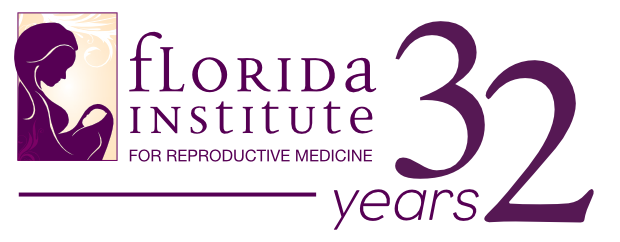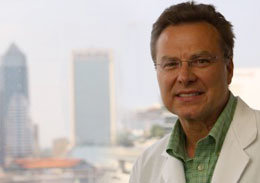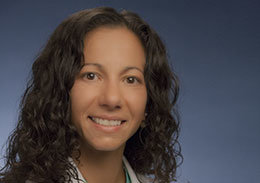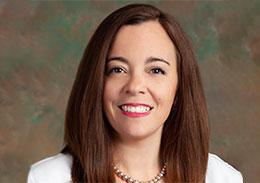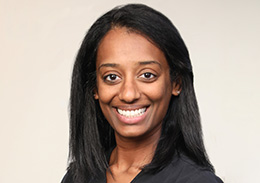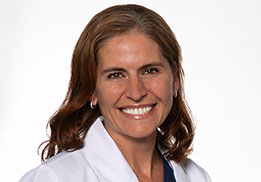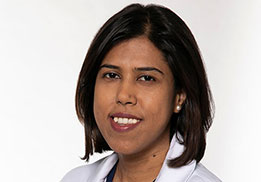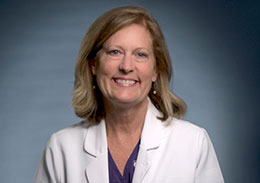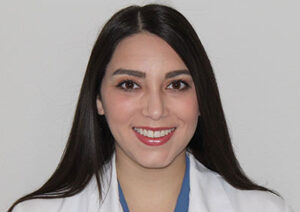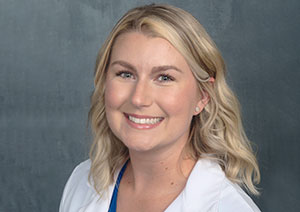Almost half of infertility occurs following an initial pregnancy that may have occurred soon after discontinuing contraception. This problem, known as secondary infertility, is often overlooked or downplayed by physicians who see these patients as being fertile and are then reluctant to evaluate or treat. Maternal age and the duration of secondary infertility are critical issues.
We know that women are born with a certain number of eggs – they never make any more eggs the rest of their life. The number and quality of eggs declines as a function time, resulting in a significant decrease in pregnancy rates after age 35, and a drastic decrease after 38. Infertility is defined as a lack of conception after one year of unprotected intercourse. For individuals 35 years or older, most reproductive medicine specialists recommend initiation of a work-up after four to six months of trying. Ultimately, again, remaining egg number and quality are the critical issues.
Evaluation for secondary infertility should be identical to that of primary infertility targeting those issues that are most suspect. Almost 40% of all infertility is male related. Even if a male has fathered a child, semen parameters can change drastically due to a variety of health changes including medical problems, surgeries, traumas, or infections. A semen analysis will evaluate a male’s current fertility status. If there has been a change in male partners, particularly if the new partner has not fathered children, certainly male factor may be the issue. Almost 50% of infertility is female related, primarily ovulatory or anatomic problems. While a female may have a history of regular ovulatory cycles prior to, her ovulatory pattern can change drastically following a pregnancy, especially if there has been a significant weight gain. If prior pregnancy was delivered by cesarean section, adhesion scar formation certainly can occur and be associated with significant tube compromise. Loss of weight will often bring about a return of regular ovulatory cycles.
If there has been a long time between the first pregnancy and initiation of a second pregnancy, certainly the issue of egg quality may be the problem, especially if mom is now over age 35. Strategies to try and improve fertility due to an egg quality issue include superovulation (getting the patient to release multiple eggs) or in vitro fertilization (transferring more than one embryo back to the uterus). If the initial pregnancy was delivered by cesarean section and especially if there was a history of infection, adhesions may be causing a tubal factor. If there was retained placenta following delivery, uterine scarring can occur – hysteroscopy (outpatient surgery – scope is used to look into the uterine cavity) should be considered. With a significant time delay before initiating a second pregnancy, conditions like endometriosis, the growth of endometrial tissue outside the uterine cavity, i.e. in the pelvis, may cause significant anatomic distortion. Likewise, fibroid tumors that may have been small and clinically insignificant prior to pregnancy may now be large and compromising fallopian tubes or the uterine cavity.
In conclusion, secondary infertility is a very common problem. Delaying evaluation and treatment is often associated with severely diminished chances for pregnancy. Secondary infertility should be approached in an aggressive, targeted manner especially in the context of advanced maternal age.
Five of the Most Important Questions to Ask
1) Ask to see the program’s official CDC pregnancy statistics.
The Wyden Bill requires that all IVF programs report their results to the CDC yearly. While this is a law, it is not enforced by any significant penalty. Treatment centers that do not report their data know they cannot be audited. These clinics may be reporting erroneous data. They may be transferring excessive numbers of embryos to achieve pregnancy. Transferring excessive numbers of embryos leads to high rates of multiples, resulting in potentially serious morbidity and mortality to the babies and Mom. Often programs have good fresh IVF transfer rates, but poor results with cryopreserved embryos. Pregnancies from cryopreserved embryos can add a tremendous amount to a couple’s cumulative chance of having a baby. Again, ask to see official CDC take home cryo IVF pregnancy rates.
2) Ask if the clinic has regular office hours on Saturdays and Sundays.
Infertility is time specific. If the clinic is not operating seven days a week, care, i.e. inseminations, IVF retrievals and transfers are often being compromised.
3) Ask if the embryology lab is headed up by an embryologist certified as a highly complex lab director (HCLD).
This certification is given to embryologists who have obtained an advanced degree of training and equipment knowledge and have passed a rigorous certification exam. Ask if the center has a secured facility for storage of your cryopreserved sperm, eggs, or embryos. Ask how often liquid nitrogen tanks are filled and checked. There should be documentation of these checks. Ask if the program has a back up alarm system.
4) Ask about cost for IVF.
Typically IVF costs range anywhere from $10,000 to $18,000 inclusive of medications. Ask if there are additional charges for intracytoplasmic sperm injection (ICSI), typical cost $500 to $1000. For assisted hatching, typically $500 to $1500, and whether cryopreservation, typically $500 to $1500, is included in the cost estimate. Costs to do a subsequent cryo IVF transfer cycle range from $1000 to $3000.
5) Ask if the physicians at the clinic are board certified or board eligible in Reproductive Endocrinology/Infertility.
Reproductive Endocrinology/Infertility subspecialists are OB/GYNs who have gone on to do two or three more years of subspecialty training in Reproductive Medicine. To maintain board certification subspecialists must continue to keep up with important medical advances and take a re-certification exam yearly.
Answers to these five questions will go a long way in directing you to one of the better IVF programs in your area. Do your homework – chances are your referring physician has no knowledge of these five issues.
A female has the maximum number of eggs she will ever have as a fetus in utero at 20 weeks gestation, approximately 20 million. During the last 20 weeks of in utero development, over 90% of the eggs will be lost, forming scars in the ovary. At the time of birth, there are about a million eggs. At puberty, when the brain-ovarian axis matures and ovulation begins, a few hundred thousand eggs remain. The process of egg loss is known as atresia, and will continue until the last egg is released – menopause.
Each month when the menstrual cycle begins, a number of eggs start to develop – this group of eggs can vary in size from one to as many as thirty or forty eggs, depending on the number of eggs an individual is born with and her age. With each reproductive cycle the entire group of eggs starts to develop; one egg out of this group develops to maturity and is released, i.e. ovulates, but the entire cohort of eggs is lost. On rare occasions, more than one egg may ovulate, bringing about the opportunity for a multiple pregnancy. This process of egg loss continues until menopause. Typically, five to six years before menopause, cycles will become increasingly irregular as the quality of eggs that are released are often poor and may not produce enough estrogen to trigger ovulation.
Some individuals are born with much lower numbers of eggs. These individuals are at risk for premature menopause – sometimes this occurs as early as the teenage years. It is unknown why some women are born with fewer eggs, but likely is a function of genetics, i.e. menopause is often closely timed to maternal menopause. The time of menopause can be influenced by a number of environmental factors, including surgeries, radiation, chemotherapy and smoking. Starting your period early does not accelerate menopause. Likewise, being on birth control pills, which prevents ovulation, does not delay menopause. Again, there is a programmed loss of eggs each month.
Am I at risk for premature menopause?
It is important to identify those individuals that may be at risk for early menopause, not only for fertility concerns, but also for potential hormone replacement needs. There are three primary means to guesstimate ovarian, i.e. egg, reserve:
Age
Age can be looked at as a rather crude guesstimate of remaining ovarian reserve, as some individuals are born with much greater numbers of eggs than others. Certainly it is true that on average a 20-year-old is going to have far greater ovarian reserve than a 30-year-old, who would be expected to have far greater ovarian reserve than a 40-year-old.
Again, because of differences in the number of eggs someone is born with and potentially harmful environmental factors, there can be considerable variability in ovarian reserve at any age. More accurate assessments of ovarian reserve include:
Hormonal Tests
Day 3 FSH/estradiol levels
Inhibin levels
Clomiphene citrate challenge tests
Antimullerian hormone
Ultrasound Assessment of Ovary
Counting the number of egg/follicle units in the ovary, “antral follicle count” early in the cycle, typically days 2-4.
Combining different ovarian reserve tests is likely to give a more accurate assessment of ovarian reserve. Ovarian reserve can decrease abruptly in some individuals, likely representing an accelerated period of atresia, much like what happens in the second half of intrauterine development. This is relatively common and can be seen in patients whose mother had an early menopause or who have been exposed to chemotherapeutic drugs, radiation, or destructive ovarian surgeries. For others there are no obvious causes. If an individual is at increased risk for accelerated egg loss, it is important to do regular ovarian reserve testing, especially if future fertility is a concern.
Fertility Preservation Options
Oocyte Cryopreservation
Oocyte cryopreservation is a relatively new, exciting technology for those individuals who do not have a male partner or who are uncertain as to whether they will stay with their current partner. Worldwide, there are approximately 1500 babies born from frozen eggs. Because of the limited number of babies born and relatively short follow up on these children, this technology should still be considered research and therefore should be carried out under an IRB (Institutional Review Board) protocol. The institutional review board serves to review results from oocyte cryopreservation both in terms of efficacy and safety. There are many programs throughout the country advertising egg freezing. Many of these programs have had little or no success. It is, therefore, important to ask some key questions when trying to identify a competent institution. Namely, the number of babies that have been born from that particular embryology lab, not an affiliated lab or program. Ask the number of eggs that were frozen to achieve these pregnancies, thereby getting an idea of efficacy. The number of eggs available to an individual less than age 35 years of age or younger, on average, will vary typically between 8 and 16 each month. For those individuals 36 and above, the cohort size is likely to be reduced, averaging between 5 and 12. Ovarian reserve testing, again, will give a better estimate of individual egg number. Depending on the efficiency of the program and an individual’s ovarian reserve, more than one stimulation cycle may be necessary to have a realistic chance for pregnancy. Programs involved with oocyte cryopreservation should maintain a registry as to any birth defects or any development problems.
Florida Institute for Reproductive Medicine has been involved with oocyte cryopreservation since 1998. To date, we have had 63 babies born from frozen eggs. On average, we have required ten mature eggs to produce a healthy ongoing pregnancy in mothers 35 years or less. For individuals 36-38, we are requiring on average fourteen mature eggs. We do not offer oocyte cryopreservation for individuals over the age of 38, as the great majority of these individuals will have low ovarian reserve and a very high percentage of poor quality eggs, i.e. they are unlikely to benefit from cryopreservation.
Pre-embryo or embryo fertility preservation
This is an appropriate option for those individuals who are in a stable relationship. In general, if there is any concern about potentially discarding an embryo, the option of cryopreserving pre-embryos should be considered. Freezing a pre-embryo is, in essence, freezing male and female nuclear material that are close to each other but have not combined to form an individual. Pre-embryo and embryo cryopreservation have been available since the mid-1980’s. There have been hundreds of thousands of babies born from both pre-embryos and embryos. There is a large body of reassuring health data, on babies born from (pre)embryos. Fertility rates with (pre)embryos vary tremendously depending on the reproductive medicine program. Each advanced reproductive medicine program in the United States is required by law to report their data to the CDC; therefore, before considering an individual program, check with the CDC registry (www.cdc.gov/ART/ART2011) on the program’s cryo IVF data.
Costs for oocyte cryopreservation as well as (pre)embryo cryopreservation should mimic those of a typical IVF cycle; the steps are basically the same. Ongoing storage costs will typically vary from $100 – $400 per year.
